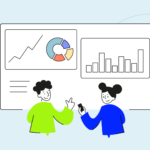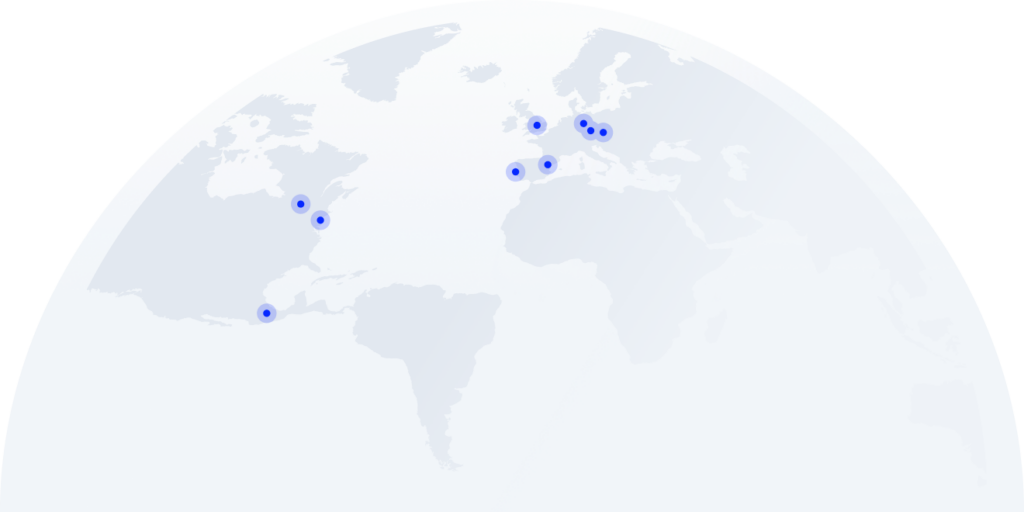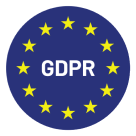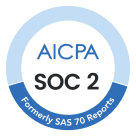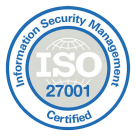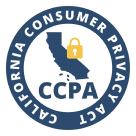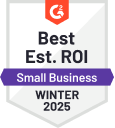Outbound Call Campaign Master Guide: Set-Up & Best Practices

Effective outreach can either make or break your company. However, setting up a successful outbound call campaign takes more than a queue and a team.
From expanding your customer base, generating additional revenue, discovering new opportunities, and obtaining actionable feedback – campaign calling is the key to everything your business needs to survive.
Discover how professionals set up and manage outbound call center campaigns to maximize positive results with tried and (A/B) tested best practices and strategies.
Key takeaways:
- Outbound campaigns can be divided into three types based on their targets: cold-calling campaigns, warm outreach, and feedback/referral campaigns.
- Features, call scripts, dialing strategies, and agent training are all crucial aspects to consider when designing an effective outbound calling campaign.
- Most campaigns fail due to a lack of personalization, A/B testing, continuous improvement, and prioritizing quantity over quality.
What Is an Outbound Campaign?
If you’ve ever received an unprompted call from your bank, telco operator, insurance company, or even a business you’ve never heard of, you’ve experienced an outbound call campaign. This is the opposite of an inbound call, where you’re the first to reach out.
Outbound calling campaigns are a tool businesses use to contact their existing customers (warm calls) or potential leads (cold calls) for various reasons, including gathering feedback, qualifying prospects, closing deals, and more.
Why Are Outbound Campaigns Important?
Outbound call center campaigns are your direct line to your audience and the best way to reach the most people possible.
This makes outbound calls crucial for lead generation, customer acquisition and retention, sales prospecting, and more. By taking the initiative to reach out, you can build relationships, gather insights, and drive desired actions, all while staying in control.
What Are the Benefits of Outbound Campaigns?
As your secret weapon for targeted outreach, outbound campaigns can offer you various benefits. These include:
1. Drive Direct Engagement:
By letting customers and prospects hear information directly “from the horse’s mouth”, you maximize the impact of your message. According to DiscoverORG, 75% of surveyed executives are willing to schedule an appointment via a call.
2. Focus on Real-Time Interactions
Immediate feedback allows you to adjust your approach to the conversation on the fly and further optimize processes based on actionable insights. According to HubSpot, overcoming objections can boost your close rate by 64%.
3. Incorporate Precise Targeting
With outbound campaigns, you can tailor your message to specific demographics or segments, ensuring it resonates with your audience. Research by CallHippo suggests that personalization and persistence can boost conversions by 72%.
4. Encourage Quick Responses
Unlike waiting for inbound inquiries, outbound campaigns can elicit immediate responses and actions. Instapage found that 32% of marketers feel their outbound calls are more effective than other outreach strategies.
5. Maintain Control Over Messaging
You have full control over the content and timing of your outreach, ensuring consistency and relevance. According to LinkedIn, when used to build a relationship with your prospect, you’re 78% more likely to outsell your peers.
Types of Outbound Calling Campaigns
Based on the outbound call campaign’s purpose, there are several types you can choose from. These differ not only in their overall goal but also in strategies and include:
- Cold-Calling Campaigns:
As the name suggests, this type of outbound call campaign focuses on reaching out to potential prospects via unprompted cold calls. Its primary goals usually include qualifying leads, setting up appointments, and closing deals.
Cold calls typically have a terrible conversion rate – only 2% on average. Because of this, call centers often incorporate cold-calling scripts to improve success by up to 5x and outbound dialers to speed up the calling process.
You can reach 3x more prospects each day with CloudTalk’s Power Dialer.
- Warm Outreach Campaigns:
Unlike cold calls, warm outreach focuses on qualified leads and existing customers. Common use cases include follow-ups, up-selling, cross-selling, win-back, and retention-boosting activities.
Thanks to preexisting relationships, warm calls have a much higher conversion rate of 20% – 70%, depending on the agent’s relationship with the customer.
To maximize their results, companies often supplement their warm outreach campaigns with CRM integrations, real-time customer-card features, and outbound dialers that enable personalization.
CloudTalk’s Smart Dialer lets you start calls directly from your CRM or web browser and lower call times by <50%.
- Survey, Feedback, and Referral Collection:
This type of campaign also stems from warm outreach but differs in its purpose. Instead of outward selling, it focuses on driving internal change via insights and feedback and gathering recommendations from happy customers.
Apart from that, it tends to have similarly high conversion rates and uses the same tools and features as outlined above for warm outreach campaigns.
How To Set Up an Effective Outbound Calling Campaign
Despite how simple the types of calling campaigns explained above may seem, there’s actually quite a lot that goes into creating one that’s effective.
Not to worry, though, below you’ll find a complete guide to everything you need to do to meet your goals.
1. Define Campaign Objectives & Target Audience
The first step is always identifying what you want to do and who you want to do it to. Now, this isn’t particularly difficult.
If you want to expand your customer base, you’ll want to run a cold-calling campaign focusing on prospects in your target markets. If you want to maximize your revenue from existing customers, you should start warm outreach for up-selling. You get the point.
However, the devil is in the details. To achieve your goals, you’ll need to set SMART goals (Specific, Measurable, Achievable, Relevant, Time-Bound) based on trackable metrics that are tied to your goals.
You can read more about those here, but some of the ones you should consider are:
- Deals Closed
- Appointments Scheduled
- Customer Satisfaction (CSAT)
- Net Promoter Score (NPS)
- Number of Blocked Calls
2. Choose the Right Tools & Technology
Your call center campaign can only be as good as the people and tools involved. Regarding the latter, VoIP software nowadays offers a plethora of features and integrations to streamline your workflows – all you have to do is pick the best ones.
Of course, this is subjective and will depend on multiple factors, including your outbound campaign goals, team composition, budget, and more. You can learn all about this topic in our article here, but the ones definitely worth considering include:
#1 Call Center Campaigns
Overview:
Making “umms”, “aahs”, and awkward pauses is a thing of the past
with Call Center Campaigns.
Take full control of your agents’ conversations and allow them to
focus on the things that matter by providing them with detailed scripts, surveys, and questionnaires.
Streamline daily workflows with pre-prepared queues. Set up, monitor, and adjust aspects regarding attempted calls and the time between them in real-time.
Best for:
Inbound & Outbound Operations
Benefits:
- Streamlined Call Operations
- Simple & Quick Set-Up
- Shorter Wait Times
- Less Time Between Calls
- Improved Agent Productivity + Higher Customer Satisfaction
Solution
Price ($ per user/month)
CloudTalk
$30
#2 Click-to-Call
Overview:
Transform the way your agents initiate calls by transforming every phone
number online or in a CRM/helpdesk tool into a clickable format. Remove
manual dialing from the equation and save both time and money.
All you need to do is install the Click-to-Call extension into your browser.
You can forget about copy-pasting and false dials the same way
as you can call – instantly.
Best for:
Inbound & Outbound Operations
Benefits:
- Instant Calls
- No Mistakes
- No Manual Dialing + Streamlined Operations
- Works Across All Channels
#3 Voicemail Drop
Overview:
Your agents can’t connect with a key customer? No problem! On top of
leaving a custom voicemail, you can pre-record your messages and
send the voicemails with the tap of a button.
Best for:
Outbound Operations
Benefits:
- Faster Resolution
- Minimal Call Delays
- Customizable Voicemails
- Better Customer Experience + Higher Contact Success Rate
Solution
Price ($ per user/month)
CloudTalk
$25
Aircall
$30
Justcall
$19
#4 Power Dialer
Overview:
Reach 3x more prospects each day while streamlining agent workflows
with scripts, questionnaires, surveys, and post-call automation. Create
custom daily dialing lists and let reps start calling with just a click.
Power Dialers are able to automate calling operations by importing
contacts directly from your CRM or XML file and maintaining the agent’s
flow by initiating the next call on the list after the last one ends.
Best for:
Outbound Operations focused on volume.
Benefits:
- More Calls Each Day
- Faster Call Resolution
- Daily Task Automation
- Simple Usability + Cross-tool Compatibility
Solution
Price ($ per user/month)
CloudTalk
$50
Justcall
$49
#5 Smart Dialer
Overview:
Lower call times by up to 50% and reach more prospects efficiently.
Create simple-to-use, one-click call queues directly from any website,
CRM, or helpdesk tool with customizable buffers.
Order contacts via drag-and-drop for maximum efficiency and let your
agents run wild. The Smart Dialer automatically moves unresponsive
prospects further down the list to save time and maximize responses.
Best for:
Outbound Operations focused on customer experience.
Benefits:
- One-Click Call Queues
- Drag-and-Drop Queue Management
- Automatic Contact Prioritization
- 3rd Party Tool Integration + Daily Task Automation
Solution
Price ($ per user/month)
CloudTalk
$50
Aircall
$50
Justcall
$49
#6 Customer Details
Overview:
Get instant insights into who’s on the other end of the line by pulling up
relevant customer details even before you pick up the phone. Integrate
your call center solution with your CRM or Helpdesk for easy access.
View past call history, call recordings, transcripts, deals, support tickets,
or even your own custom fields. Save customers’ and agents’ time by
offering easy context. Set up for success with mid-call tagging.
Best for:
Inbound & Outbound Operations
Benefits:
- Instant Insights
- Cross-Platform Compatibility+ Improved Customer Experience
- Available Before and During Calls
Solution
Price ($ per user/month)
CloudTalk
$30
#7 Call Notes
Overview:
Create and access notes taken at any time. Pick up where you left off and
use relevant data from past interactions to build better relationships with
your customers.
Best for:
Inbound & Outbound Operations
Benefits:
- On & Post-Call Note Creation
- Instant Note Access
- Added Context for Each Call + Higher Customer Satisfaction
Solution
Price ($ per user/month)
CloudTalk
$25
#8 Call Tagging
Overview:
Use pre-existing tags or create new custom ones on the fly to effectively
categorize each call and track call type, result, and various KPI metrics.
Implement mandatory post-call tagging to maintain clear visibility.
Transform the way you evaluate calls by automatically synchronizing tags
with your CRM. Dig deep into your Analytics with tag filters. Maximize
efficiency with data-based strategic decisions and agent coaching.
Best for:
Inbound & Outbound Operations
Benefits:
- On & Post-Call Tag Creation
- Improved Analytics Evaluation
- Added Context for Each Call + Better Agent Coaching
Solution
Price ($ per user/month)
CloudTalk
$25
Aircall
$30
#9 Call Center Analytics
Overview:
Centralize all your team’s data and access everything you need to know regarding your agent’s performance or call statistics to make predictions and optimize your strategy.
Go as deep as you like. Track every step of every inbound or outbound Call. Use that information to expertly evaluate the performance of individual agents and departments alike.
Best for:
Inbound & Outbound Operations
Benefits:
- Complex Understanding of Call Center Performance
- In-depth Analysis of Departments & Agents
- Strategic Targeted Coaching + Data-Based Decision-Making
Solution
Price ($ per user/month)
CloudTalk
$30
Aircall
$50
Justcall
$49
#10 Call Monitoring
Overview:
Let managers and experienced agents join support and sales calls to provide assistance, evaluate agent performance, or assess the effectiveness of call scripts.
Choose your preferred amount of visibility to either barge calls directly and take part in 3-way calls, whisper in your agent’s ear without the customer knowing, or just be a fly on the wall with call listening.
Best for:
Inbound & Outbound Operations
Benefits:
- Selectable Visibility
- Simple Problem-Solving
- Improved Customer Experience + Better Agent Coaching & Onboarding
Solution
Price ($ per user/month)
CloudTalk
$50
Aircall
$50
Justcall
$49
3. Pick the Right Dialing Strategy
Back in the day, before automated outbound dialing was a thing, choosing and structuring your strategy was quite the involved process. Nowadays, you don’t need to worry about that because there’s an outbound dialer for each possible use case.
We cover this topic extensively in our article here, but for now, all you need is this quick overview of the different types of dialers available and their respective strategies.
#1 Auto Dialer
The most basic type of outbound dialer. It calls the next number in the queue after the last call ends.
Use Case: Low-cost, high-volume call operations for simple sales.
Efficiency: N/A
Check how much Auto Dialer costs.
Description
- Easy to Use
- Minimal Requirements
- Affordable
- Automates Calls
- No Targeting
- No WFM
- Likely Burnout
How you can compare Auto vs Predictive dialer?
#2 Predictive Dialer
An outbound dialer able to evaluate and anticipate call center capacity. It can initiate multiple calls simultaneously for each agent to maximize resource utilization.
Use Case: High-volume call campaigns for smaller teams with limited resources.
Efficiency: When used correctly, can boost the number of successful calls by <400%.
Description
- Capacity Predictions
- Non-Human Number Filtering
- Performance Tracking
- No WFM
- Likely Burnout
- No 3rd Party Tool Integration
#3 Power Dialer
Outbound dialer that makes one call per agent at a time. Offers a higher level of control over designated call queues. Is simple to use and doesn’t require complex algorithms to work.
Use Case: Balanced call campaigns optimized for both reach and personalization.
Efficiency: When used correctly, can help reach 3x more leads per day.
How much does Power Dialer cost?
Description
- Pacing Management
- Burnout-Proof
- Workflow Automation
- Low Call Abandonment
- 3rd Party Tool Integration
- More Downtime
- Smaller Call Increase
- Limited Filtering
See why you should choose Power Dialer over Predictive Dialer.
#4 Smart Dialer
The most complex of all outbound dialers. Can be used to create highly customized, adaptive call queues and campaigns. Can be integrated with 3rd party tools (CRMs, Helpdesks, etc.) and Click-to-Call.
Use Case: High-value, medium-sized call campaigns optimized for CSAT.
Efficiency: When used correctly, can lower call times by <50%.
Learn how Smart Dialer is priced.
Description
- Intelligent Call Pacing
- Burnout-Proof
- Adaptive Algorithms
- Single-Click Call Queues
- Ensured Compliance
- More Expensive
- Longer Set-Up
- May Require Agent Training
4. Navigate Compliance & Regulation for Outbound Calls
This should come as no surprise, but most normal people aren’t big fans of outbound marketing calls. As a result, over the past few decades, the industry’s become subject to more and more laws and regulations to protect these individuals from harassment.
GDPR and MAN regulations are just the start of it, so if you want to stay out of legal trouble, you must research and understand local and international laws your outbound campaign may be subject to.
Equally important is to establish a DNC (Do-Not Contact) list and coach your agents on how to react in situations where contacts request to be exempt from your future outreach.
5. Craft Effective Cold-Calling Scripts
As mentioned in the previous section, calling scripts, but especially cold-calling scripts, are for maximizing the positive results of your campaign. After all, they can boost your conversion rates by up to 5x.
All that’s to say that if you want to succeed, you need to know how to craft new scripts or adapt existing ones for your specific use case. That involves creating an effective cold-call opening line, offering value up-front, and personalizing for the customer.
Last but not least, you should also train your agents on how to overcome common objections, as this can increase your success rate by up to 64%.
6. Train & Empower Your Outbound Team
Speaking of training, ensuring your outbound team has the motivation, skills, and knowledge necessary to succeed is equally important. Recognition and performance-based incentives are a good way to start with the prior.
As for the latter, you should begin by designing a comprehensive training program consisting of product knowledge, campaign understanding, script usage, and customer engagement strategies.
Using tools like Call Monitoring, Recording, and Whispering we mentioned earlier, will allow you to observe your agents “in the wild” and offer actionable advice based on real-life situations or even offer insights while they’re on a call.
Finally, you should encourage reps to share their experiences and feedback with colleagues in order to cultivate a culture of continuous improvement.
7. Optimize Calling Schedules for Maximum Impact
Although Gitnux suggests that the best times for sales calls are between 11:00 – 12:00 and 16:00 – 17:00 (customer’s time, of course), this doesn’t necessarily have to be the case for every industry in every country.
As such, we highly recommend you dig into your call center analytics and try to identify the best times for your customer engagement. While doing so, you should also keep in mind the impact time zones have on your calls, especially in international campaigns.
Based on this information, you can tweak your staffing to match your campaign needs. Additionally, you could also augment this with a Predictive Dialer to anticipate customer availability or a Smart Dialer that adapts call queues to your current workforce status.
8. Implement a Pilot Campaign to Test Strategies
So, let’s say you’ve done all that and have a campaign that’s all but ready. Should you just start calling? No, of course not!
You don’t want to invest significant resources into your campaign only to find that it doesn’t work as you expected. Thus, you need to put your assumptions to the test in a small-scale “pilot” campaign.
Schedule it to run across a few days with a limited number of targets. Gather information and feedback from both agents and contacts and make sure to monitor performance in analytics.
If everything goes as expected, you can deploy your outbound call campaign at full capacity. However, if you find that the results don’t meet your goals, you’ll have to go back to the drawing board.
9. Monitor, Analyze, and Optimize Your Calling Strategy
We mentioned setting KPIs and OKRs in the beginning, and now it’s time we go full circle and finish on how to actually evaluate your performance toward them.
Most call center software comes with Analytics to let you monitor various aspects of your calls on an individual, team, department, or even company-wide level. However, not everything is relevant to your outbound campaign goals.
So, based on what you want your campaign to achieve, you’ll have to keep an eye on specific call-tracking metrics. This will allow you to find areas for improvement, troubleshoot on the fly, and ultimately meet your goals.
We discuss this at length in our article here, but the most common ones include:
1. Conversion Rate: The percentage of outbound calls that result in a desired outcome, such as a sale, appointment booking, or lead generation. It measures the effectiveness of outbound sales efforts in converting prospects into customers or qualified leads.
2. Average Call Duration: The average length of time spent on outbound sales calls. This metric provides insights into the efficiency of sales conversations and helps identify opportunities to streamline interactions and improve productivity.
3. Dialing Efficiency: The ratio of successful connections to attempted outbound calls, often expressed as a percentage. Dialing efficiency measures the effectiveness of reaching prospects and helps optimize calling strategies to maximize contact rates and sales opportunities.
4. Pipeline Velocity: The rate at which prospects move through the sales pipeline from initial contact to conversion. Outbound sales activities influence pipeline velocity and provide insights into the effectiveness of sales processes and the overall health of the sales funnel.
5. Customer Satisfaction Score (CSAT): A metric used to measure customer satisfaction with the support experience, typically collected through post-call surveys or feedback mechanisms. CSAT scores provide insights into the quality of support interactions and overall service delivery.
Outbound Call Campaign Best Practices
Apart from what we discussed in the previous section, there are a few things you can do to even further improve your outbound calling campaigns. These include:
- Personalize Outreach Efforts:
Think beyond generic scripts and canned responses. Personalization is key to capturing your prospect’s attention and building rapport. Take the time to research your prospects and tailor your messaging to address their specific pain points, interests, and needs.
Incorporate personal details into your conversations, such as recent interactions or industry-related news, to demonstrate that you’ve done your homework and genuinely care about their success.
- Prioritize Quality over Quantity:
In the fast-paced world of outbound calling, it can be tempting to focus solely on dialing as many numbers as possible. However, quality should always take precedence over quantity.
Instead of chasing arbitrary call quotas, strive to engage in meaningful conversations that add value for both parties. Invest time in active listening, asking probing questions, and truly understanding your prospect’s challenges and objectives.
By prioritizing quality interactions, you’ll not only increase your chances of conversion but also foster long-term relationships built on trust and mutual respect.
- Leverage Multichannel Communication:
While outbound calling is a powerful tool in your marketing arsenal, it’s essential to complement it with other communication channels for a holistic outreach strategy.
Incorporate email, SMS, social media, and other channels into your campaign to reach prospects where they are most receptive. By diversifying your communication approach, you’ll increase your chances of connecting with prospects and reinforce your messaging across multiple touchpoints.
Remember to maintain consistency in tone, branding, and messaging across all channels to provide a seamless and cohesive customer experience.
- Embrace Ethics:
Obtain explicit consent before contacting prospects, respect their privacy preferences, and provide clear opt-out mechanisms for those who wish to unsubscribe from further communications. By prioritizing compliance and ethics, you’ll build trust with your audience and safeguard your reputation in the long run.
5 Common Mistakes to Avoid in Outbound Calling
Now that we’ve seen everything you should do to make the best outbound call center campaign possible, let’s look at some of the things you definitely shouldn’t do. This includes:
1. Overlooking the Importance of A/B Testing
One of the most significant mistakes businesses make in outbound calling is failing to test and iterate on their strategies. A/B testing involves comparing two or more variations of a campaign element (such as messaging, scripts, or dialing strategies) to determine which performs better.
By neglecting A/B testing, you miss out on valuable opportunities to identify what resonates most with your audience and optimize your approach accordingly. Incorporate A/B testing into your campaign planning process to continuously refine and improve your outreach efforts.
2. Not Personalizing (Enough)
In today’s hyperconnected world, customers expect personalized experiences at every touchpoint. Yet, many businesses overlook the importance of tailoring their outreach efforts to individual preferences and needs.
Generic or impersonalized messaging can come across as spammy or insincere, leading to disengagement or frustration among prospects.
To avoid this mistake, invest time in understanding your target audience and crafting personalized messages that resonate with their unique challenges, goals, and interests. Incorporate personalization tokens, such as first names or past interactions, to make your outreach feel more genuine and relevant.
3. Underestimating the Value of Feedback
Feedback is a valuable source of insights that can help you identify blind spots, uncover opportunities for improvement, and refine your outbound calling strategy. However, many businesses overlook the importance of soliciting feedback from both agents and prospects.
Failure to gather feedback from agents can result in missed opportunities to address training needs, streamline processes, and boost morale. Similarly, neglecting to seek input from prospects means forfeiting valuable insights into their preferences, pain points, and perceptions of your brand.
Make feedback collection a priority in your outbound calling initiatives, and leverage these insights to drive meaningful improvements and innovation.
4. Relying Solely on Quantity Over Quality
While it’s tempting to measure success in terms of call volume and reach, focusing solely on quantity can lead to diminishing returns and burnout among your outbound team.
High call volumes may result in fatigue, decreased engagement, and a lower quality of interactions with prospects. Instead of fixating on dialing metrics, prioritize quality over quantity by emphasizing meaningful conversations, active listening, and relationship-building.
Encourage your team to invest time in understanding each prospect’s needs and providing tailored solutions that add value. By shifting your focus from sheer volume to quality interactions, you’ll see improved engagement, conversion rates, and long-term customer satisfaction.
5. Ignoring the Need for Continuous Training & Development
Outbound calling is a skill that requires ongoing refinement and development to stay competitive in today’s dynamic business landscape. However, many businesses make the mistake of treating training as a one-time event rather than an ongoing process.
Neglecting to invest in continuous training and development for your outbound team can lead to stagnation, decreased performance, and missed opportunities for growth.
Create a culture of learning within your organization by providing regular training sessions, workshops, and resources to help your agents hone their communication skills, product knowledge, and objection-handling techniques.
By prioritizing continuous learning and development, you’ll empower your team to excel and drive success in your outbound calling campaigns.
Conclusion
Mastering the art of outbound call campaigns is the key to ensuring your competitive viability and business continuity for years to come. And though it may take time and practice, now you know everything you need to get started.
Hungry for more? Unlock the World of Outbound Sales in 2025.
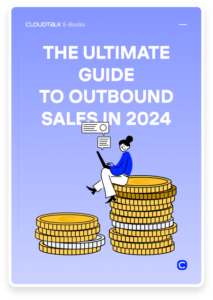
FAQs
What is outbound calling?
Outbound calling is a proactive approach where businesses reach out to potential customers via phone calls for various purposes such as sales, lead generation, or customer service.
How do you automate outbound calls?
You can automate outbound calls using specialized software or platforms that allow you to schedule and execute calls automatically based on predefined criteria or workflows.
How to make outbound calling more effective?
To enhance the effectiveness of outbound calling, focus on personalization, targeted outreach, compliance adherence, ongoing training, and performance monitoring.
What is outbound call center software?
Outbound call center software is a technology solution designed to facilitate outbound calling operations, including contact management, dialing automation, call recording, reporting, and analytics.













